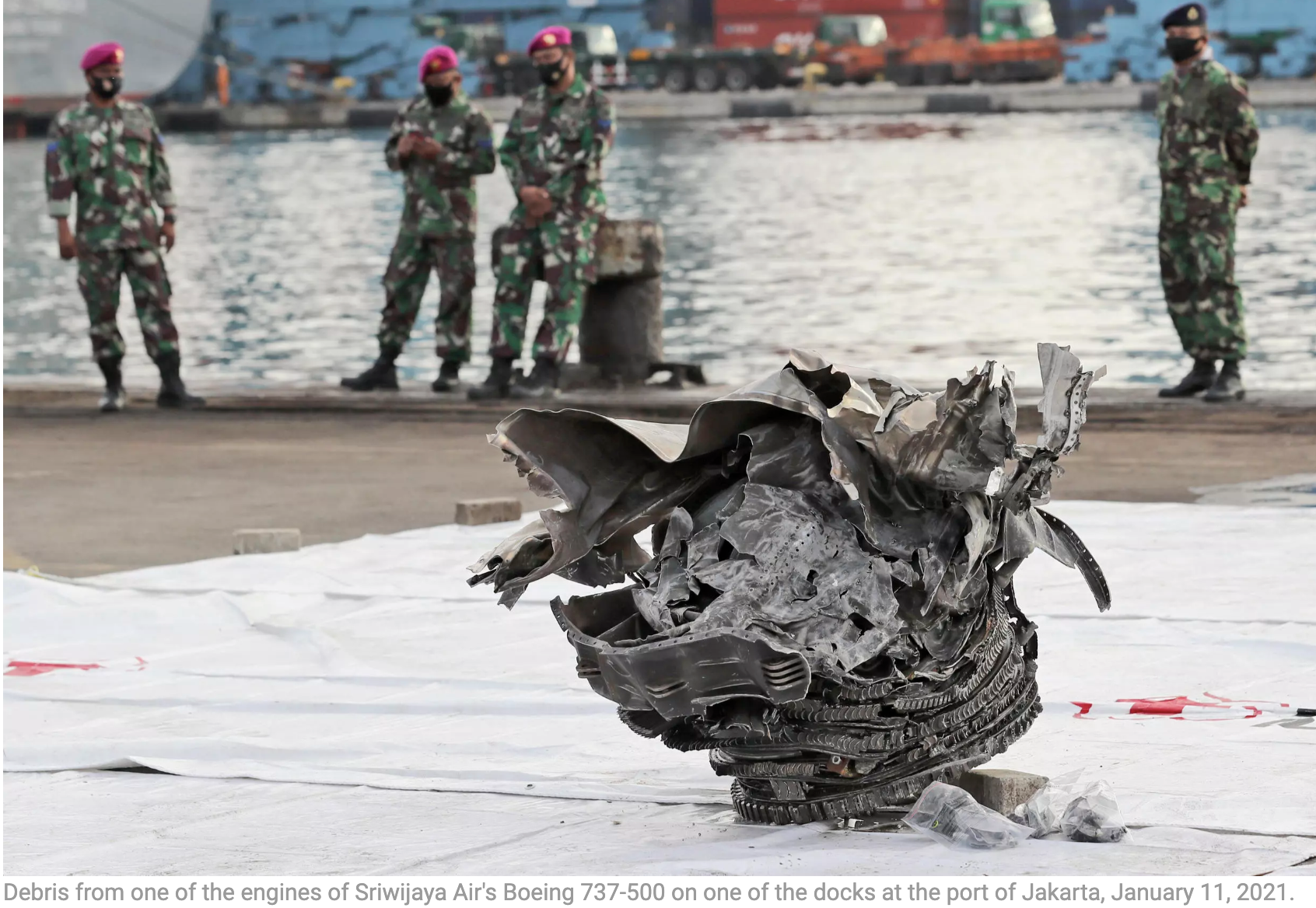Sriwijaya SJ182 crash report
Sriwijaya Air Boeing 737 crash report
Overview of the report:
According to the final accident report, maintenance logs showed 65 instances since 2013 of unresolved technical problems with the autothrottle that controlled the narrowbody’s CFM56 turbofans. KNKT officials indicated that pilots could have done more to monitor errors in the engine parameters, thrust lever settings, and the roll angle of the aircraft, which rolled more than 45 degrees to the left after the autopilot disengaged at around 10,700 feet.
Report:
A final report issued by Indonesia’s air accident investigator, KNKT, states that the fatal incident was due to a faulty automatic throttle system which the pilots failed to monitor properly.
Investigators found that while pilots can control the thrust levers manually and a plane can be cleared for flying without a normally working auto throttle, during this SJ182 flight the pilots did not closely monitor the asymmetrical thrust condition.
They also found that the left engine lever significantly decreased to 34% speed after take-off, while the right lever remained in its original climb position at about 92% speed.
“This lapse of not identifying the anomaly could be due to reduced active monitoring because of pilot automation complacency and confirmation bias that the aircraft was performing the right turn as commanded. Without using the EADI [Electronic Attitude Direction Indicator, ed.-] as a primary reference in assessing the aircraft attitude, the pilot was not able to apply correct recovery inputs,” the KNKT explained.
The increase of the thrust asymmetry could have been stopped if the aircraft Cruise Thrust Split Monitor (CTSM) system was working properly. However, the investigators determined that “an error in the spoiler signal value” led to the CTSM fault.
Consequently, the thrust asymmetry became greater, and the plane aircraft turned to the left instead of to the right as intended. The plane suffered a so-called upset condition, during which its flight altitude and airspeed went outside the normal bounds of operation for which it is designed.
At an altitude of around 10,700 feet, the autopilot disengaged completely, making the aircraft roll to the left more than 45 degrees which caused the Boeing 737 to dive into the sea.
The KNKT found that technical issues within the maintenance logs of the 26-year-old PK-CLC had been reported 65 times since 2013.

There are no articles in this category. If subcategories display on this page, they may have articles.




